Ditapis dengan
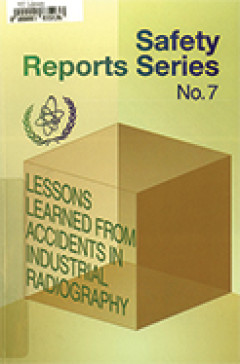
Lesson Learned from Accidents in Industrial Radiography
This Safety Report contains the findings of extensive research in terms of the lessons that can be learned from accidents which have occurred in industrial radiography, both in developed and developing countries. The review was carried out by a team of regulatory authorities, manufacturers and safety advisers. The objectives were to draw lessons from the initiating events of the accidents, the …
- Edisi
- -
- ISBN/ISSN
- -
- Deskripsi Fisik
- -
- Judul Seri
- Safety Reports Series No. 7
- No. Panggil
- -

Lessons Learned from Accident in Industrial Radiography
This Safety Report contains the findings of extensive research in terms of the lessons that can be learned from accidents which have occurred in industrial radiography, both in developed and developing countries. The review was carried out by a team of regulatory authorities, manufacturers and safety advisers. The objectives were to draw lessons from the initiating events of the accidents, the …
- Edisi
- -
- ISBN/ISSN
- -
- Deskripsi Fisik
- -
- Judul Seri
- Safety Reports Series No. 7
- No. Panggil
- 620.915 IAE l

Calibration of Radiation Protection Monitoring Instrumens
This Safety Report provides guidance on the establishment and operation of calibration facilities for radiation monitoring instruments. It reflects the current internationally accepted principles and recommended practices in calibration procedures, taking account of the major changes and developments that have occurred over the past decade.
- Edisi
- -
- ISBN/ISSN
- -
- Deskripsi Fisik
- 153 p. : illus. ; 24 cm
- Judul Seri
- Safety Reports Series No.16
- No. Panggil
- 621.317 IAE c

Calibration of Radiation Protection Monitoring Instruments
This Safety Report provides guidance on the establishment and operation of calibration facilities for radiation monitoring instruments. It reflects the current internationally accepted principles and recommended practices in calibration procedures, taking account of the major changes and developments that have occurred over the past decade.
- Edisi
- -
- ISBN/ISSN
- 9201001002 / 10206450
- Deskripsi Fisik
- 153 p. : Illus. ; 24 cm
- Judul Seri
- Safety Reports Series No. 16
- No. Panggil
- 621.317 IAE c
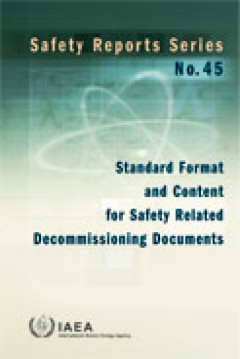
Standards Format and Content for Safety Related Decommisioning Document
This report provides information on the content and format for decommissioning plans and supporting safety related documents. Its scope includes information that is relevant to all types of nuclear facilities, ranging from nuclear power plants and reprocessing facilities to university laboratories and manufacturing plants. The report will be of interest to decommissioning planning engineers, pr…
- Edisi
- -
- ISBN/ISSN
- -
- Deskripsi Fisik
- 64 p. : Illus. ; 24 cm
- Judul Seri
- Safety Reports Series No. 45
- No. Panggil
- -
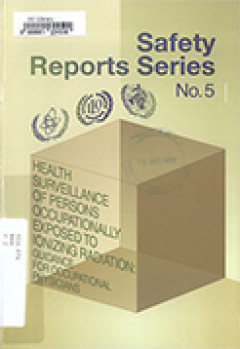
Health Surveillance of Persons Occupationally Exposed to Ionizing Radiation: …
This Safety Report specifies features of work under radiation conditions, the general rules of radiological protection for occupational exposure and the organization of the medical surveillance of workers occupationally exposed to radiation. It supersedes IAEA Safety Series No. 83, Radiation Protection in Occupational Health: Manual for Occupational Physicians (1987).
- Edisi
- -
- ISBN/ISSN
- -
- Deskripsi Fisik
- -
- Judul Seri
- Safety Reports Series No. 5
- No. Panggil
- 594.12
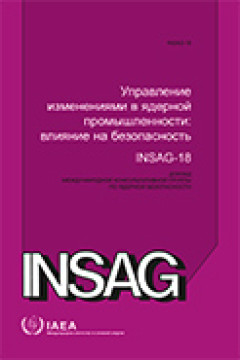
Managing Change in the Nuclear Industry: The Effects on Safety
This INSAG report is written for members of boards of directors and senior executives who are responsible for the overall safety of an installation, who make decisions for change, and who implement those decisions. It is also written for senior regulators who, on behalf of the public, ensure that boards of directors and executives meet their responsibilities for safety. The report discusses how…
- Edisi
- -
- ISBN/ISSN
- 9201134037 / 10252169
- Deskripsi Fisik
- 12 p. : Illus. ; 24 cm
- Judul Seri
- INSAG-18
- No. Panggil
- -
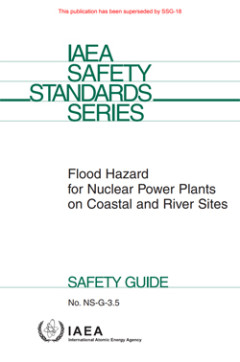
Flood Hazard for Nuclear Power Plants on Coastal and River Sites
This Safety Guide discusses the phenomena, both natural and human induced, that may cause floods or droughts at coastal and river sites, and gives an outline of the methods that can be used for, and the critical factors involved in, the evaluation of such events and of their associated effects. Possible combinations of two or more phenomena that can give rise to flooding at a site are also disc…
- Edisi
- -
- ISBN/ISSN
- -
- Deskripsi Fisik
- 83 p. : illus. ; 29,5 cm
- Judul Seri
- Safety Standards Series No. NS-G-3.5
- No. Panggil
- 621.48 IAE f
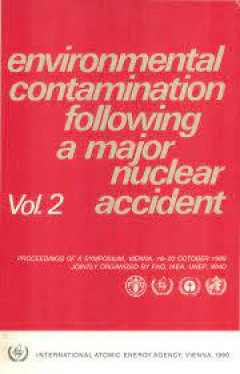
Environmental Contamination Following a Major Nuclear Accident, Vol. 1: Proce…
Proceedings of a symposium jointly organized with FAO, UNEP and WHO, Vienna, 16–20 October 1989. Scientific research on the after-effects of the Chernobyl accident on the environment and on human health has provided new data pertaining to large scale contamination. Papers at the symposium covered a wide range of subjects, including monitoring of radioactive contaminants in the environment, le…
- Edisi
- -
- ISBN/ISSN
- -
- Deskripsi Fisik
- -
- Judul Seri
- -
- No. Panggil
- -
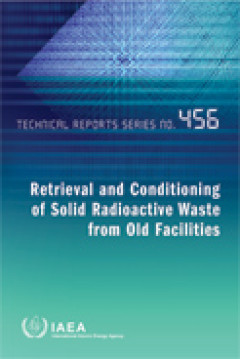
Retrieval and Conditioning of Solid Radioactive Waste from Old Facilities
This report provides information and discussion on planning, methodologies and technologies for retrieval and reconditioning of radioactive wastes recovered from old, inadequate disposal or storage facilities. The objective is to improve waste safety and security in accordance with modern requirements. Selected international experiences in waste retrieval and recovery projects are included. The…
- Edisi
- -
- ISBN/ISSN
- 9201124066 / 00741914
- Deskripsi Fisik
- 161 p. : Illus. ; 24 cm
- Judul Seri
- Technical Reports Series No. 456
- No. Panggil
- -
 Karya Umum
Karya Umum  Filsafat
Filsafat  Agama
Agama  Ilmu-ilmu Sosial
Ilmu-ilmu Sosial  Bahasa
Bahasa  Ilmu-ilmu Murni
Ilmu-ilmu Murni  Ilmu-ilmu Terapan
Ilmu-ilmu Terapan  Kesenian, Hiburan, dan Olahraga
Kesenian, Hiburan, dan Olahraga  Kesusastraan
Kesusastraan  Geografi dan Sejarah
Geografi dan Sejarah